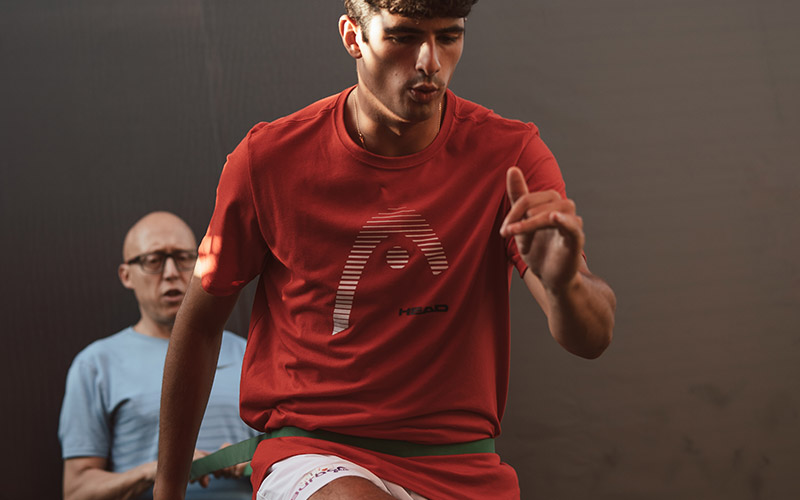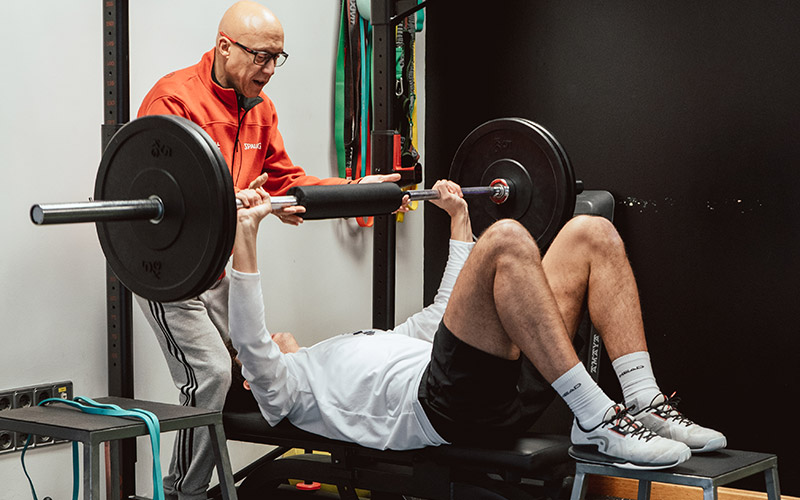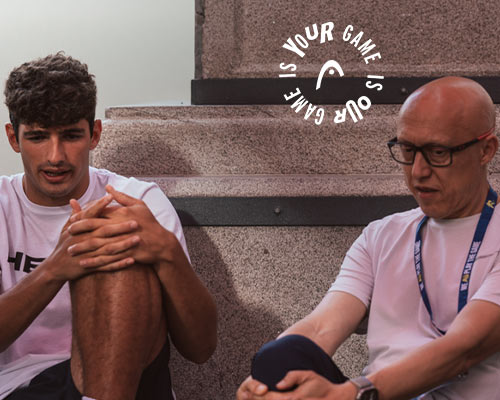Interview with Nacho Coque, Arturo Coello's Physical Trainer
Nacho Coque (Valladolid, 1967) has a degree in Physical Activity and Sport Science from the University of León and is a leading light in Spain where the physical training of elite athletes is concerned. Amongst other achievements, he worked as the physical trainer of the Spanish men's basketball team from 2005 to 2018, a period when the team became World and European champions and won medals at the Olympic Games
We talked to him about the ins and outs of coaching padel players in general, and more specifically the current world number 1, Arturo Coello, a player who champions the Delta Pro and who he has been working with since 2017.
Nacho, broadly speaking, why should we train physically?
Firstly, physical abilities improve your performance in all areas of padel, such as movements, shots, etc. Secondly, it’s a way to prevent injuries in a very demanding sport with an increasing number of competitions.
What parts of the body does padel work?
All of them. We have to understand athletes as a unit. Every part of the body is important. The lower body is essential for moving efficiently on the court. The upper body is responsible for ball control and hitting power. The core muscles will provide stability to be able to make all these movements and they’re essential for preventing injury.
And how should we plan a good padel coaching session?
From my point of view (physical training), a good padel coaching session should be planned individually because no two players are the same. From there, the fundamental physical ability is strength. The next focus to consider would be the ability to repeat explosive power.
From a technical training perspective, it would also be very interesting to control the workload, both in terms of its volume (training time) and the intensity and variability of its exercises.
Great. In light of what you have just said, how would you physically train an amateur padel player?
The focus of an amateur player should be on not getting hurt, i.e. health in practice. If you are progressing and you spend several hours a week on padel, you should do strength exercises aimed at improving your overall strength and the most-used joints in the sport.


And now to the topic at hand: how does Arturo Coello, the current world no. 1, train?
Arturo trains six days a week on non-competition weeks. We try to ration out breaks and plan his workload and content based on his physical characteristics and way of playing. On tournament weeks, we usually do regenerative sessions on Mondays and light strength work on Tuesdays and Wednesdays. From there, depending on how the tournament goes, we adjust our work, which is normally only preventive in focus.
What are Arturo’s physical strengths and (if you can say) what should he work on?
As strong points, I’d highlight his hitting power and the explosiveness of his movements. Because of his height, certain joints in his lower body suffer more. That’s where we have to reinforce his work to prevent him from getting injured.
How does Arturo warm up before a match and how does he recover afterwards?
His warm-up consists of three parts: a more general first part to activate the muscles, a second part with exercises involving more specific muscles and focusing on the target structures for padel, and the last part with more reactive exercises.
What is Arturo's diet based on? What aspects should Arturo consider when eating?
We’re lucky that Arturo's nutritional baseline is very good. We didn’t need to change his eating habits because his existing ones were very good. He tries not to eat too many dairy products and fats, to have a good protein base from different sources (fish, meat, vegetable protein) and to mainly get his carbohydrates from fruit, vegetables and rice, without too much pasta.


Moving on, what is functional training?
It’s a type of training based on a variety of exercises with different materials adapted to the individual characteristics of each athlete. It’s very important to have mastered concepts of applied anatomy to design these very specific tasks. It’s one of the keys to modern physical preparation, without overlooking other more classical methods. Nothing is a magic bullet.
What are the benefits of functional training and how can we adapt it to padel?
In my humble opinion, the most important benefits lie in it being a very efficient form of coaching, which is adapted to the athlete’s goals and, therefore, is directly related to health standards. This type of training can be adapted to padel and we can even do the exercises on court (with elastic bands, transportable weights, etc.), adapting the strength exercises to padel’s technical movements and immediately transferring from strength to coordination of the movements and shots in this sport.
Whilst we're at it, what is tapering and how is it applied to padel?
It is a planning model centred around how an athlete should arrive at a competition, e.g. after pre-season.
The aim of tapering is to lighten the training load and transform all the accumulated conditional gains - from pre-season, as we said - into an optimal state of fitness at the start of the competition. In padel, we do this at the beginning of the season and, when possible, during breaks like the one in August.
How would you improve a player’s padel level through physical training?
By studying, monitoring, evaluating and planning in line with each player’s individual characteristics and performance needs. Based on this, I make a work plan and re-evaluate it to see if the intended goals are being met.
Can you tell us what, how and when to drink during a padel match?
In normal heat and humidity conditions, water would be enough. If the conditions are more extreme, there are many different isotonic sports drinks on the market to ensure that players avoid muscular problems even if the match is a long one.
Hydration normally happens at changeovers every 2 games and prior to the match. Small quantities and very often.
How can players become more aggressive on court?
Within my field (physical training), I’m convinced that when players’ conditioning level is very good, they can go the extra mile in their movements and shots. If their conditioning level is close to excellent, they can maintain that level even if the match runs over into three sets.
And tell us… How important is invisible training in padel?
Diet, rest and all the guidelines/habits related to invisible training are decisive for any elite athlete.
Finally, Coque, do you advise stretching before and after training and every match?
There’s a lot of scientific controversy around the subject of stretching. Studies against it, studies for it… In my opinion, physical trainers should take the player's perception into account in this regard. Personally, I do use stretching, alternating this training method with the foam roller and other means for muscle recovery.

















